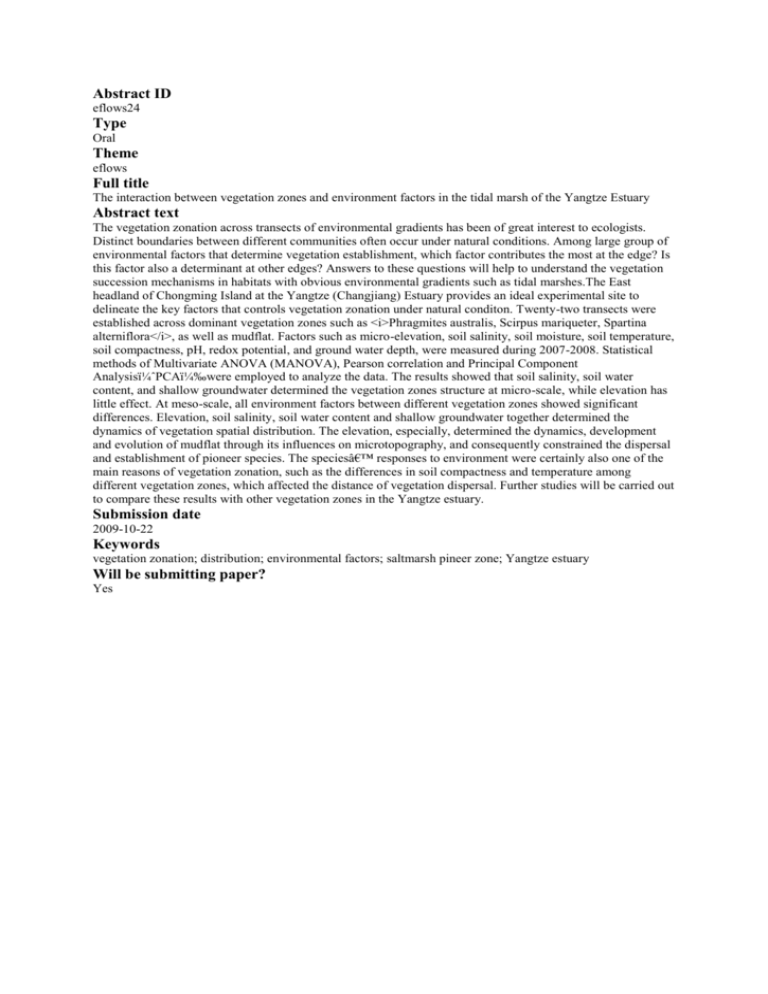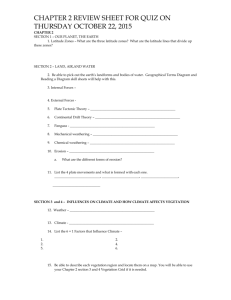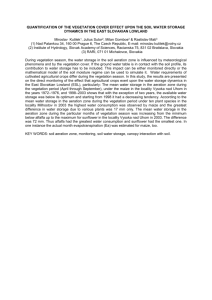Abstract ID eflows24 Type Oral Theme eflows Full title The
advertisement

Abstract ID eflows24 Type Oral Theme eflows Full title The interaction between vegetation zones and environment factors in the tidal marsh of the Yangtze Estuary Abstract text The vegetation zonation across transects of environmental gradients has been of great interest to ecologists. Distinct boundaries between different communities often occur under natural conditions. Among large group of environmental factors that determine vegetation establishment, which factor contributes the most at the edge? Is this factor also a determinant at other edges? Answers to these questions will help to understand the vegetation succession mechanisms in habitats with obvious environmental gradients such as tidal marshes.The East headland of Chongming Island at the Yangtze (Changjiang) Estuary provides an ideal experimental site to delineate the key factors that controls vegetation zonation under natural conditon. Twenty-two transects were established across dominant vegetation zones such as <i>Phragmites australis, Scirpus mariqueter, Spartina alterniflora</i>, as well as mudflat. Factors such as micro-elevation, soil salinity, soil moisture, soil temperature, soil compactness, pH, redox potential, and ground water depth, were measured during 2007-2008. Statistical methods of Multivariate ANOVA (MANOVA), Pearson correlation and Principal Component Analysis(PCA)were employed to analyze the data. The results showed that soil salinity, soil water content, and shallow groundwater determined the vegetation zones structure at micro-scale, while elevation has little effect. At meso-scale, all environment factors between different vegetation zones showed significant differences. Elevation, soil salinity, soil water content and shallow groundwater together determined the dynamics of vegetation spatial distribution. The elevation, especially, determined the dynamics, development and evolution of mudflat through its influences on microtopography, and consequently constrained the dispersal and establishment of pioneer species. The species’ responses to environment were certainly also one of the main reasons of vegetation zonation, such as the differences in soil compactness and temperature among different vegetation zones, which affected the distance of vegetation dispersal. Further studies will be carried out to compare these results with other vegetation zones in the Yangtze estuary. Submission date 2009-10-22 Keywords vegetation zonation; distribution; environmental factors; saltmarsh pineer zone; Yangtze estuary Will be submitting paper? Yes








